Amis 阿美族, Atayal 泰雅族, Bunun 布農族, Kavalan 噶瑪蘭族, Paiwan 排灣族, Puyuma 卑南族, Rukai 魯凱族, Saisiyat 賽夏族, Sakizaya 撒奇萊雅族, Seediq 賽德克族, Tao 達悟族, Thao 邵族, Tsou 鄒族 and Truku 太魯閣族.
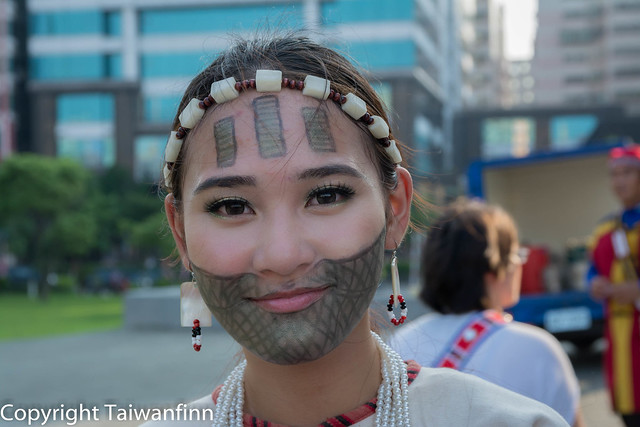
Seediq-tribe girl 賽德克族
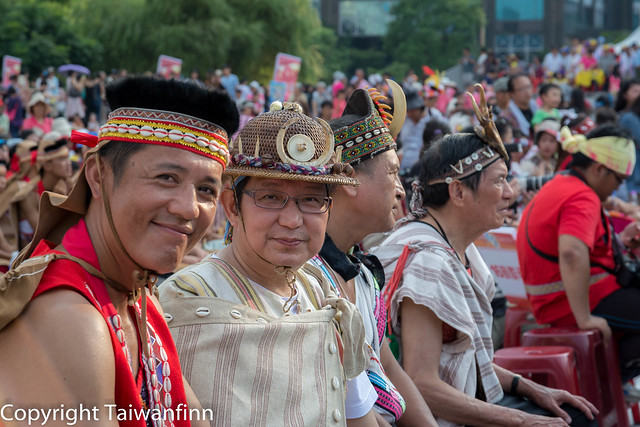
Chiefains from different tribes.
In Taiwan these ethnic groups are commonly called "Taiwanese aborigines" (原住民, pinyin: yuánzhùmín), but the word "aborigines" will be gradually replaced with the word "indigenous".
Photographer Rich J. Matheson has wonderful information of the different tribes here: Thetaiwanphotographer.com
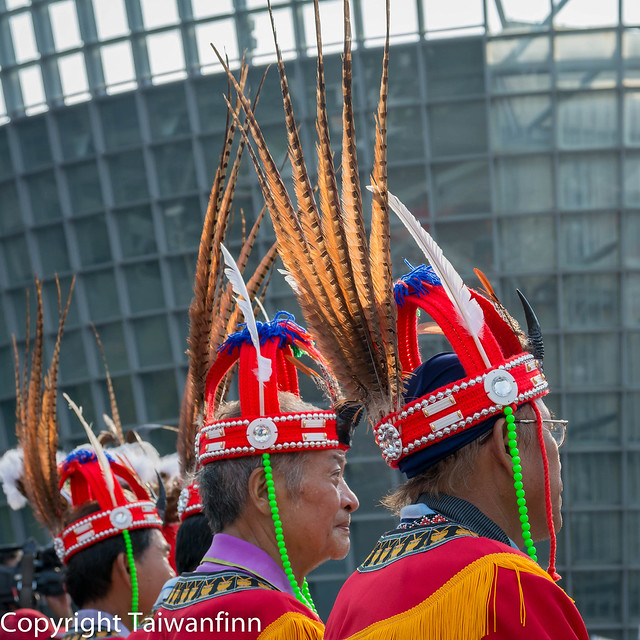
These gentlement are apparently local politicians dressed as indigenous chieftains.
I had the pleasure to be present when The Second Global Indigenous Peoples Performing Arts Festival 2014 was organized in Taoyuan. First time it took place in 2011 in Taipei.

Amis-tribe 阿美族 ladies taking selfies.
This festival is organized by the The Council of Indigenous Peoples (CIP; Chinese: 原住民族委員會; pinyin: Yuánzhù Mínzú Wěiyuánhuì). It is a ministerial level body under the Executive Yuan in the Republic of China. (For those who have never heard of Republic of China, and they are many, suffice to say that in practice it equals to the Island of Taiwan).
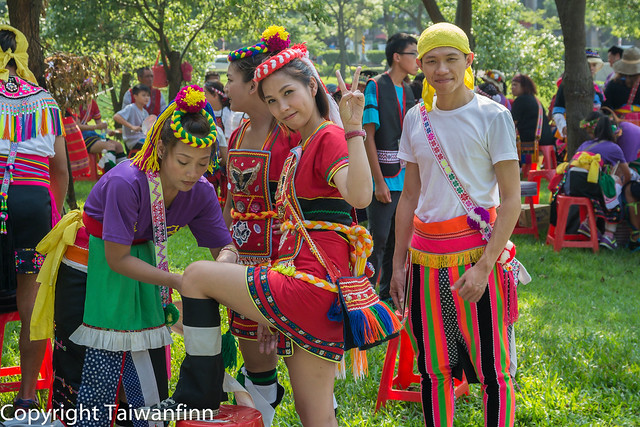
The festival is NOT organized by the World Council of Indigenous Peoples WCIP, which used to be an international organization defending Indigenous peoples rights. That organisation was dissolved some years ago because of internal disputes. I think maoris may have had their part in the disputes:
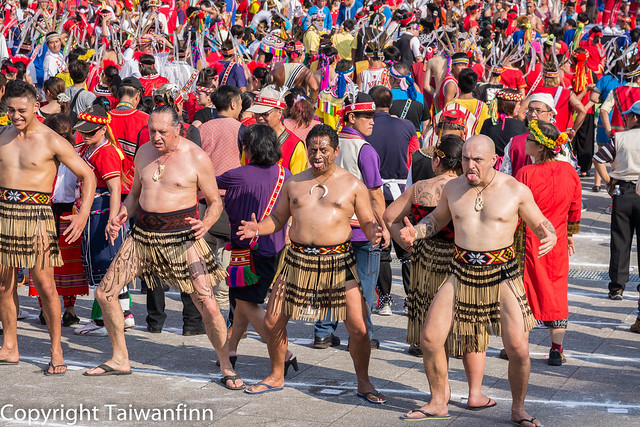
The main purpose of this festival is "to promote Taiwan's indigenous culture of music and dance, and to advocate Taiwan's indigenous and international exchanges". It has lots to do with tourism.
In addition to multiple Taiwanese groups there were overseas groups from at least 7 other countries: Guam, Tahiti, New Zealand, Chile, Hungary, Canada, Burundi.
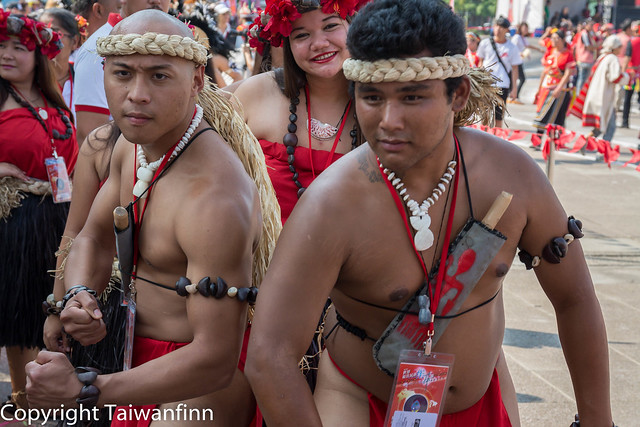
These guys are Guma Tao Tao Tano -warriors from Guam. I am not really sure if they try to be scary or cute.

But I am sure these lady-warriors from Guam don't even try to be scary.

Some of the maoris from New Zealand scare me, though. They are the group called Te Kapa Haka o Whangara Mai Tawhiti

Group Manahua from Tahiti. How sweet!
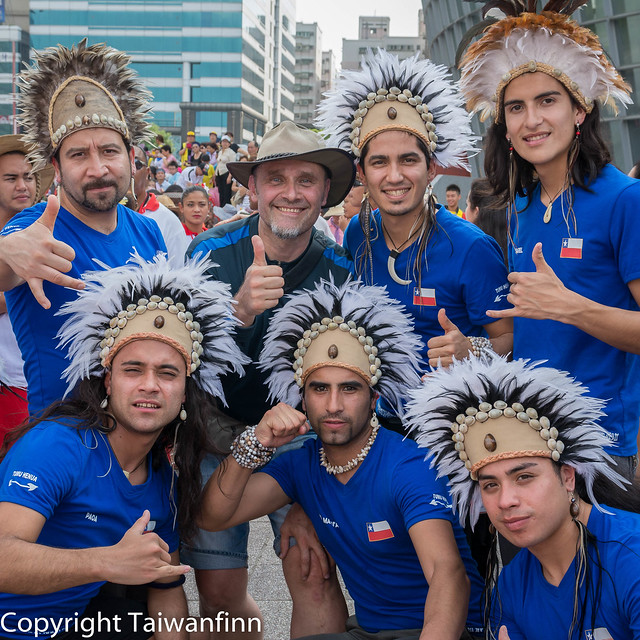
Tumu Henua from Easter Island, Chile. I think the coolest looking group. I spoke Spanish to them and of course they called me "Güeón".

Tumu Henua ladies, Isla de Pascua.
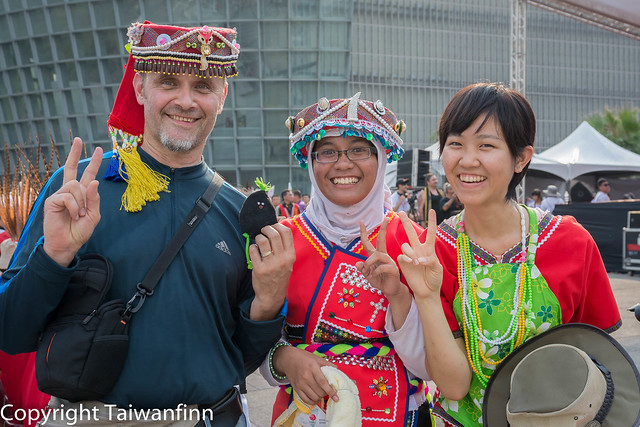
Couple of international students enjoying the music and colours.

One of the most impressive costumes belong to
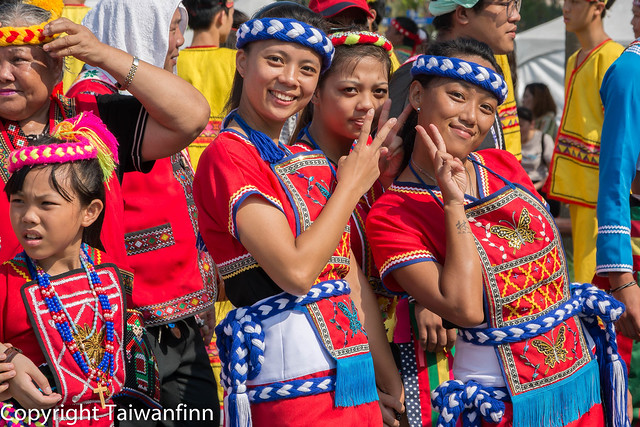
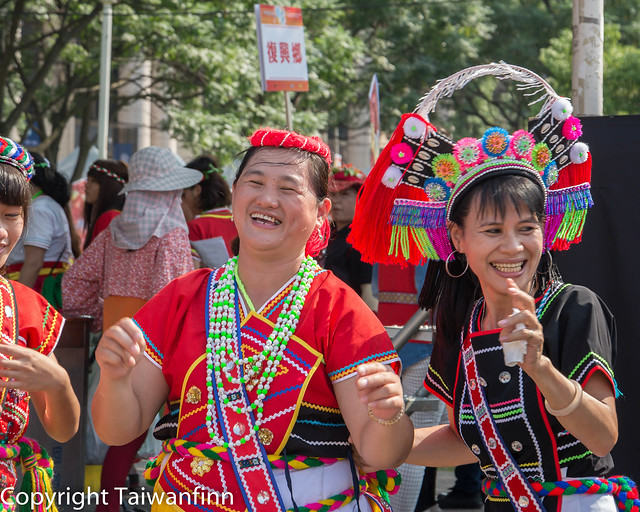
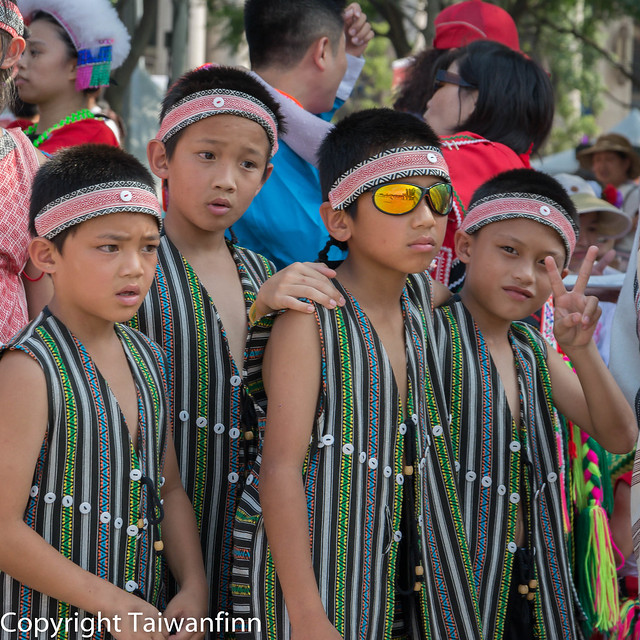
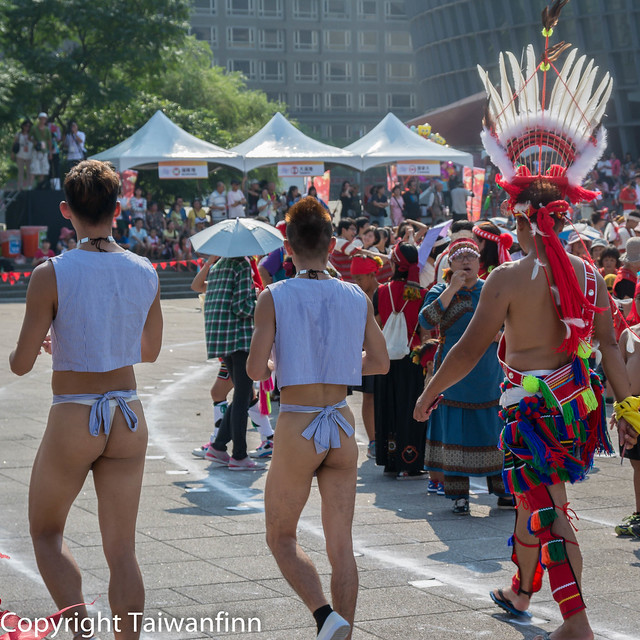
The minimalistic attire of these two young men indicate that they belong to Tao-tribe 達悟族. The Tao, or Yami, live in the small Orchid Island South-East of Taiwan. I have heard stories that the during the colonial times the Japanese occupants tried to integrate the Tao, but failed, because the Tao just ignored the Japanese rulers completely, like they were air. This is why the Japanese, hopeless, left them alone.

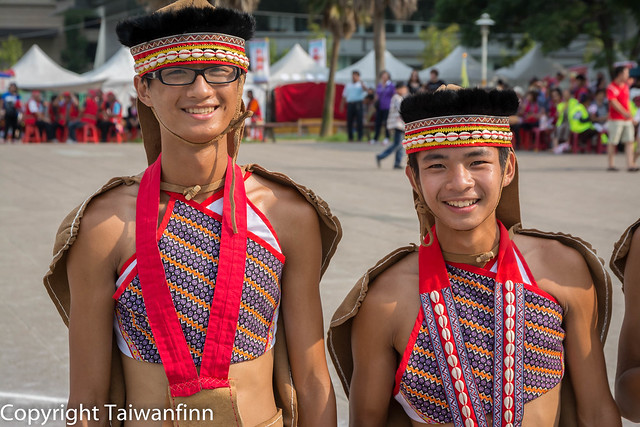
It is not easy to identify different groups. Any help is appreciated.

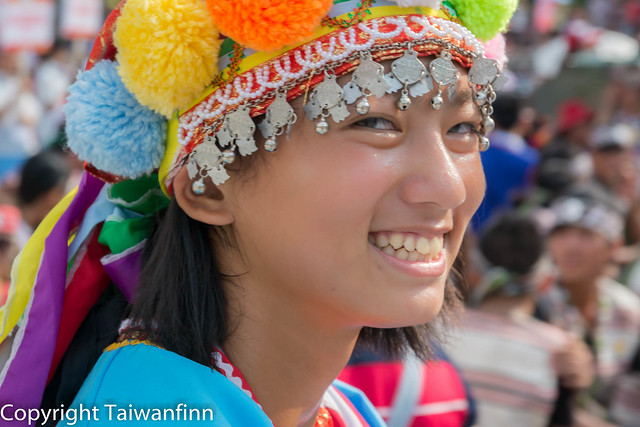
A girl with tsou-tribe head gear.

A random tourist feels suddenly accepted.


Zhou-tribe?
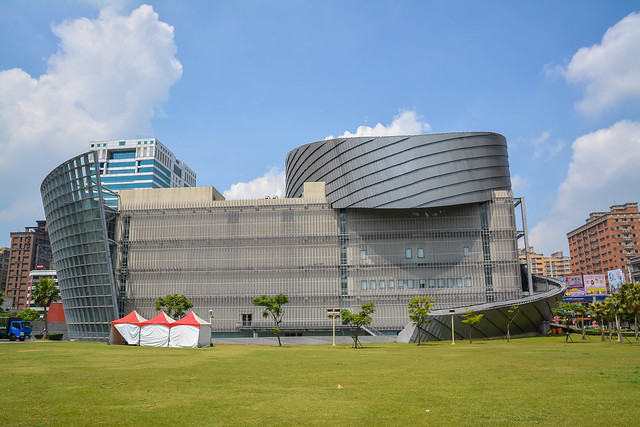
The venue was the brand new Taoyuan Arts Center (桃園縣展演中心; pinyin: Táoyuán Xiàn Zhǎnyǎn Zhōngxīn)
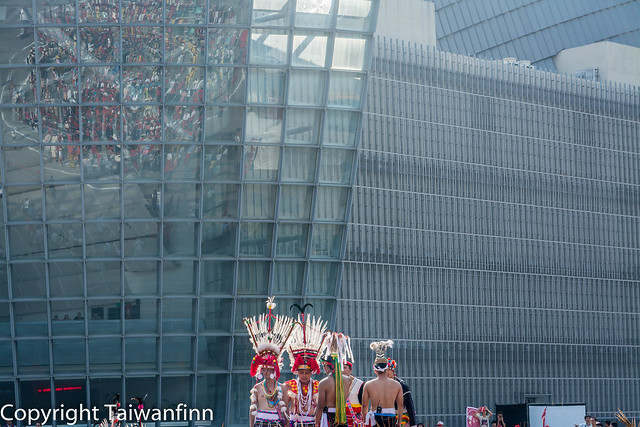
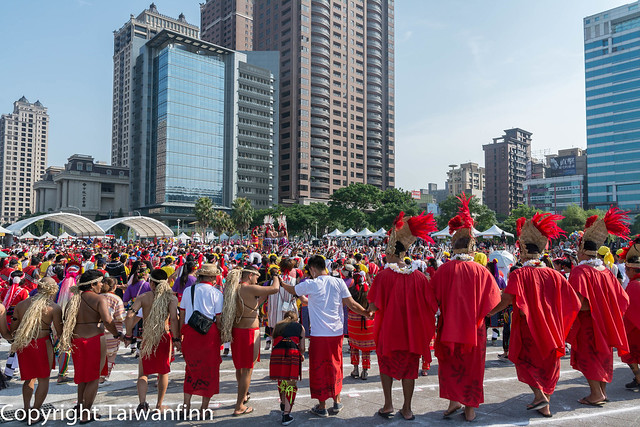
One of the main attractions of the festival was to make a Guinness World Record of "Largest Malikuda Dance". Malikuda is a traditional Amis tribal dance.
The Guinnes record was reached indeed, with more than 1300 dancers. Here is video, where Don Esaias is dancing with them. If somebody knows what tribe Don Esaias belongs to, please inform me, too.
There is much more to tell about this. If this article raise any interest, I may continue in another one.
No comments :
Post a Comment